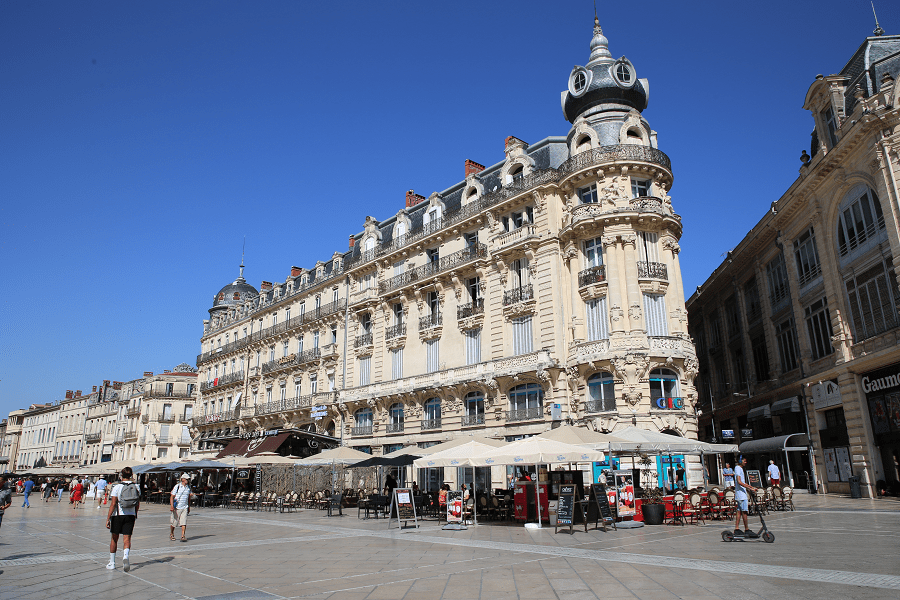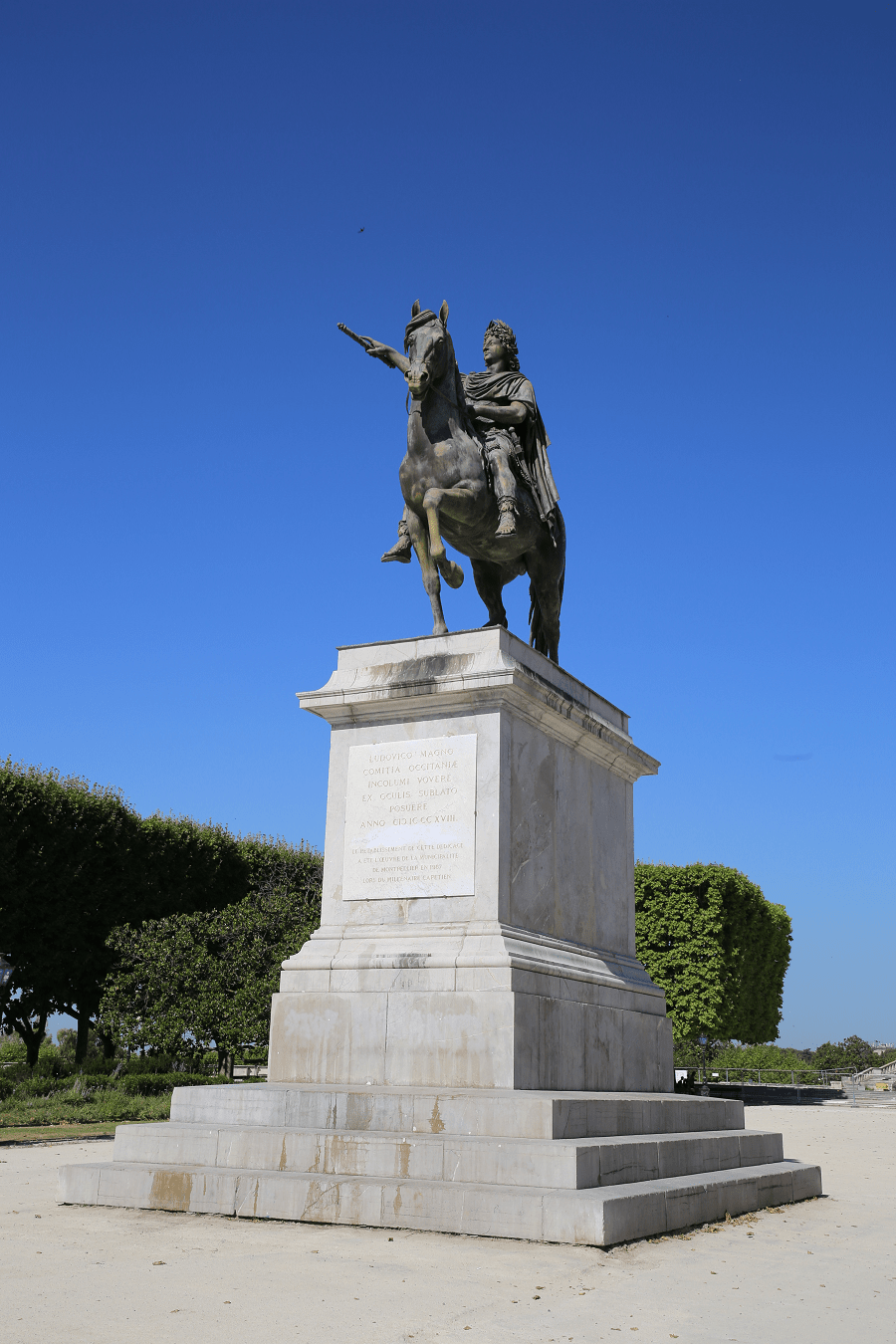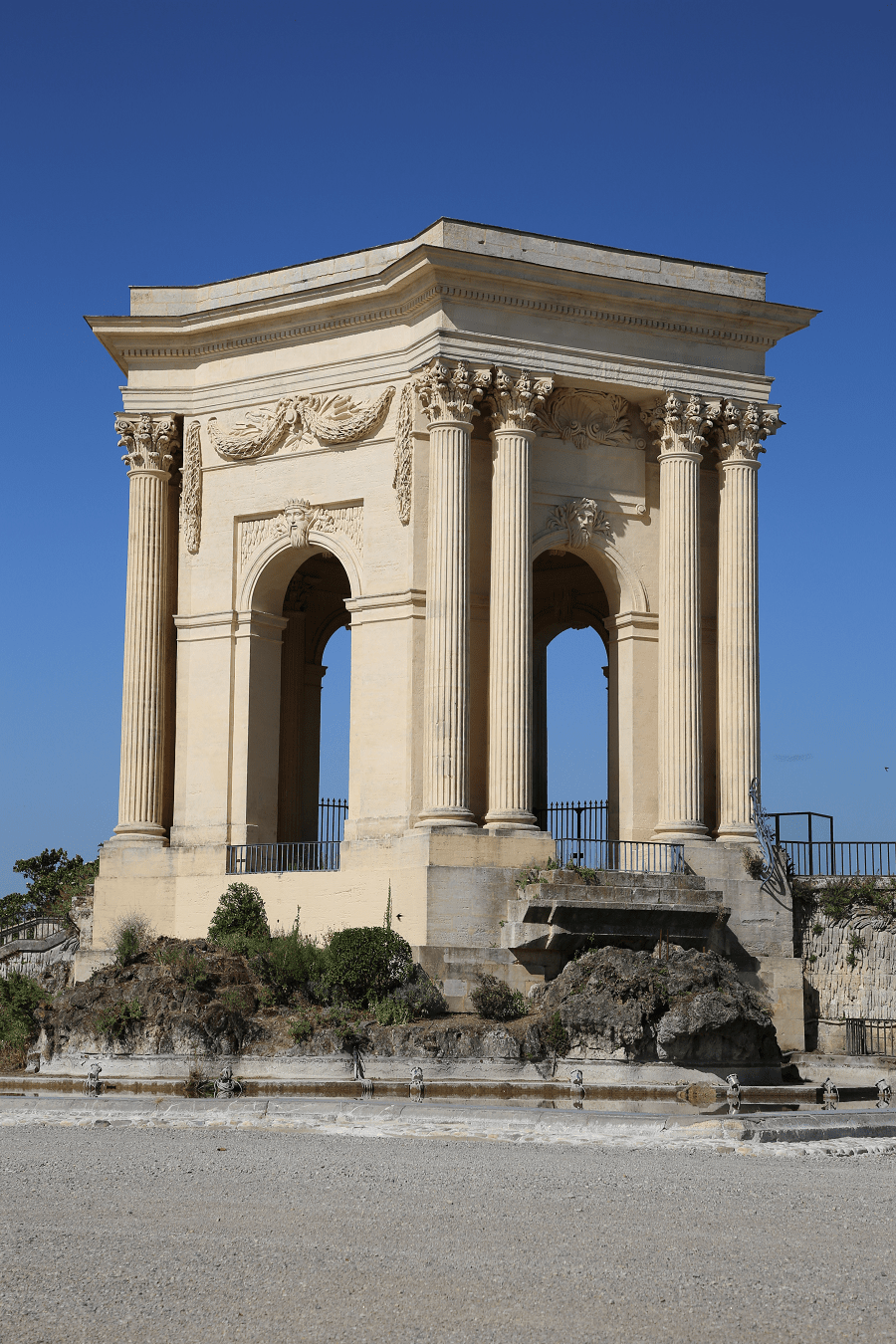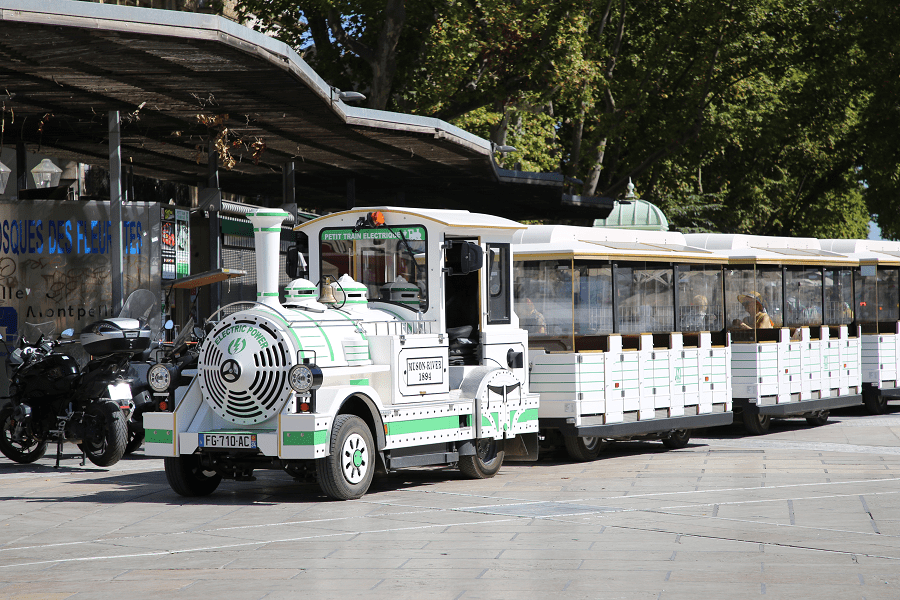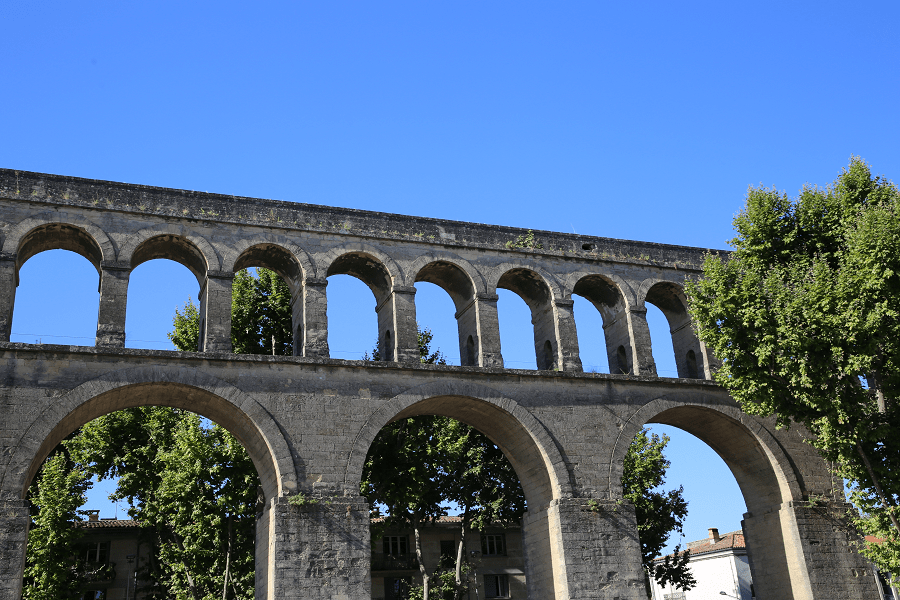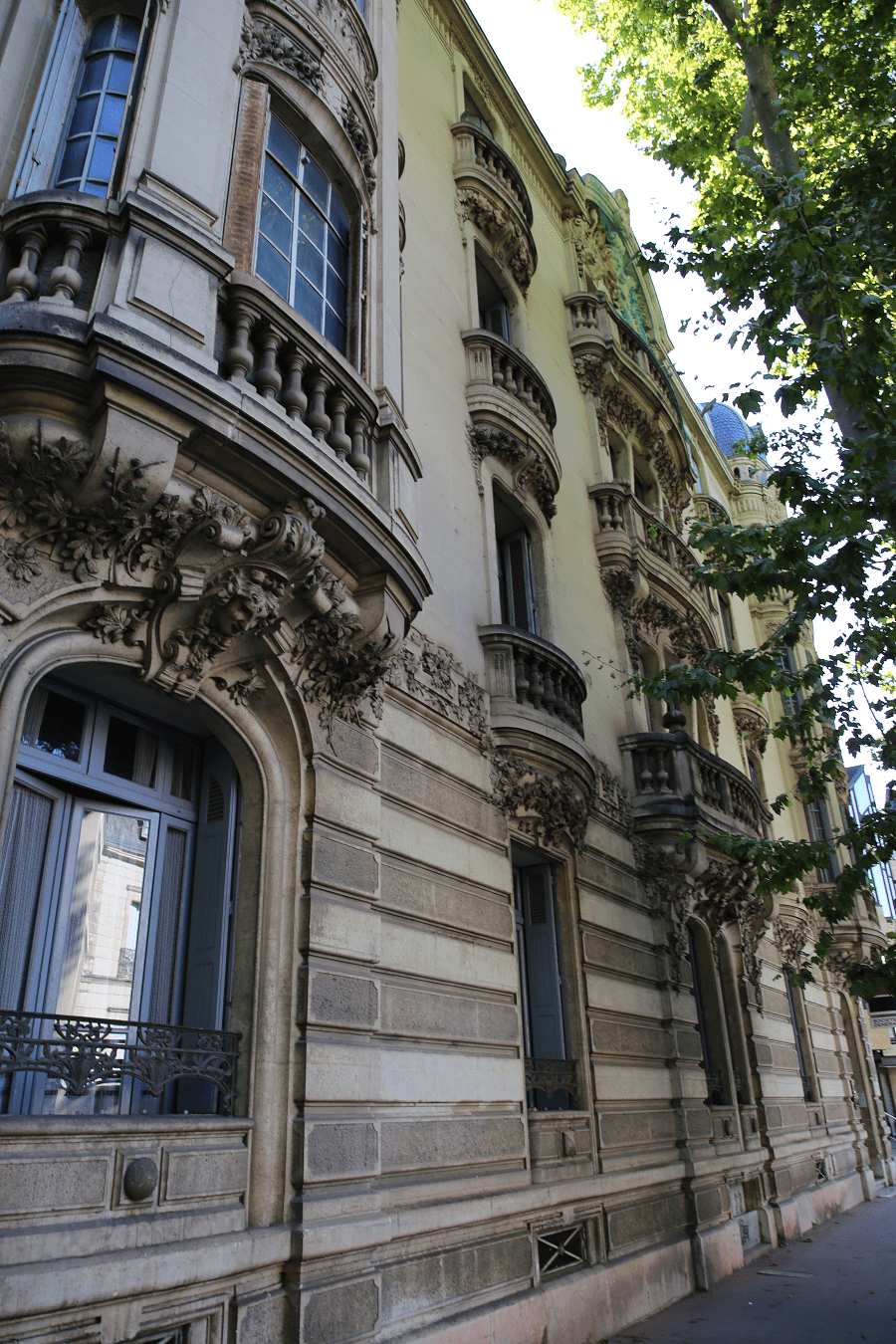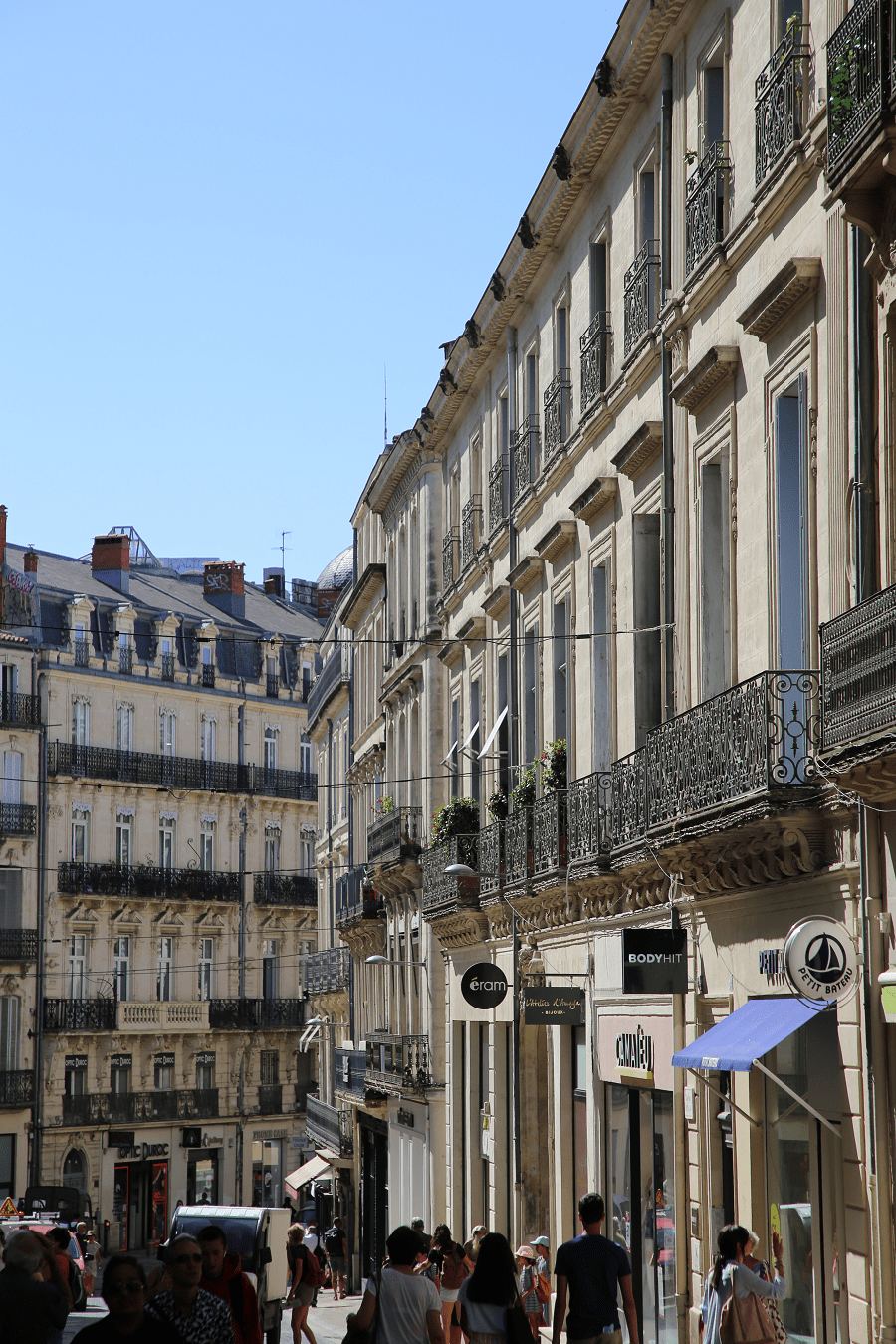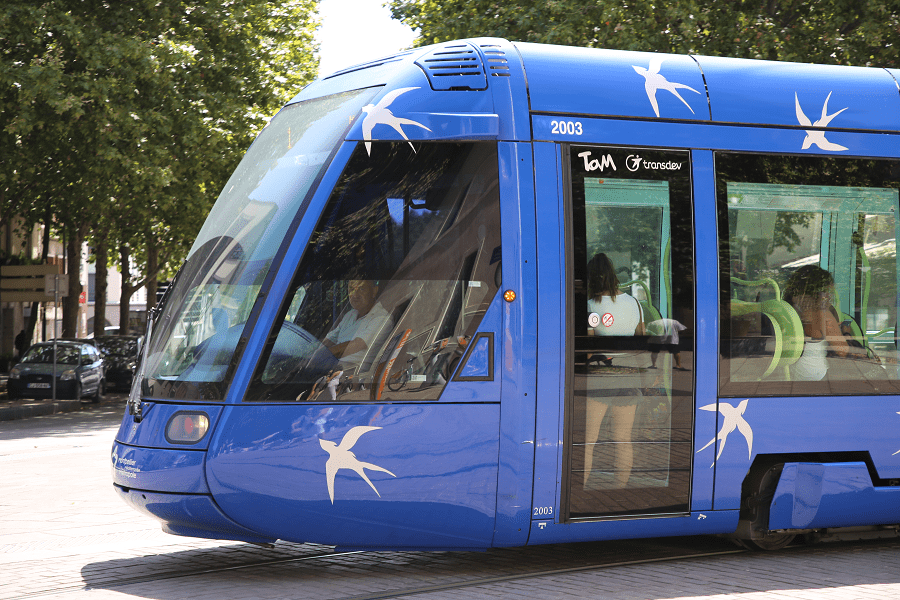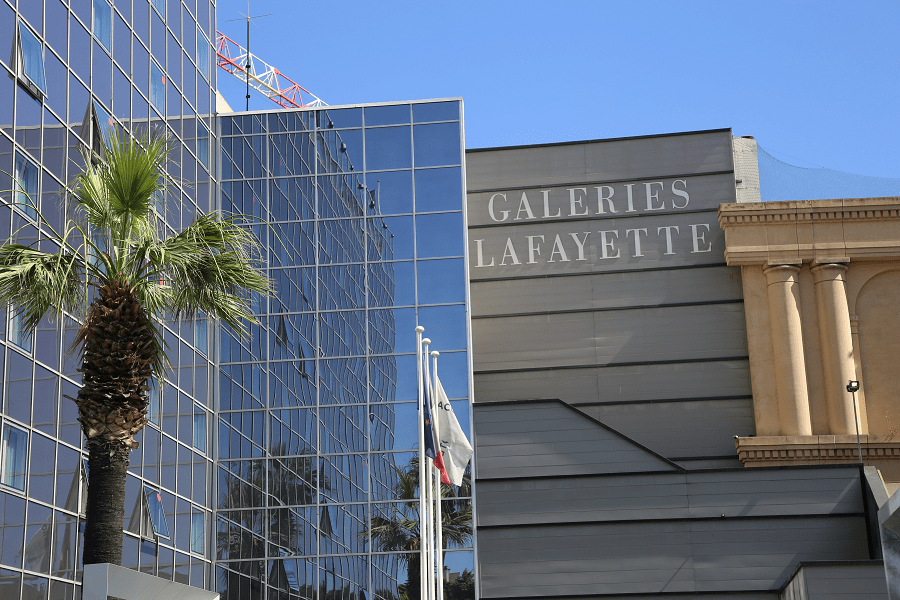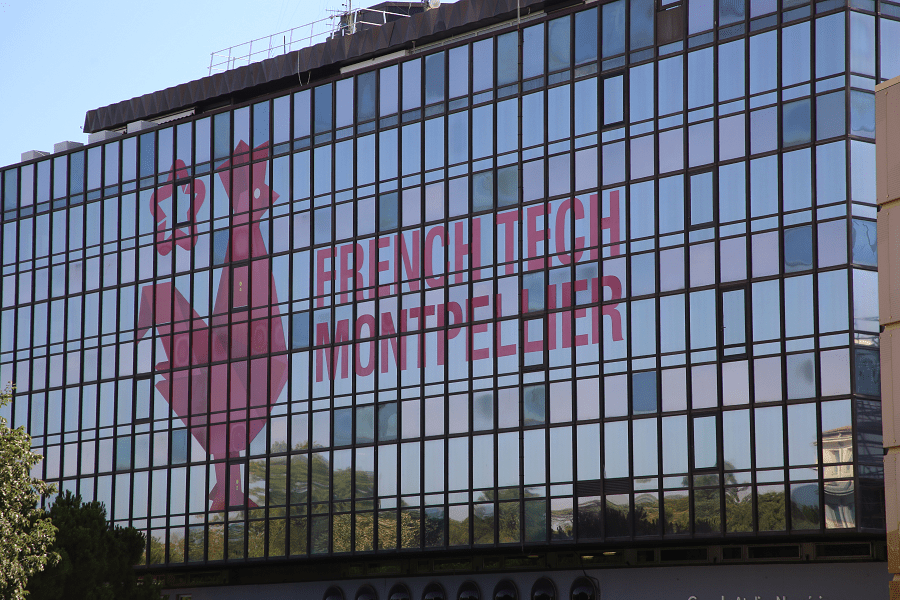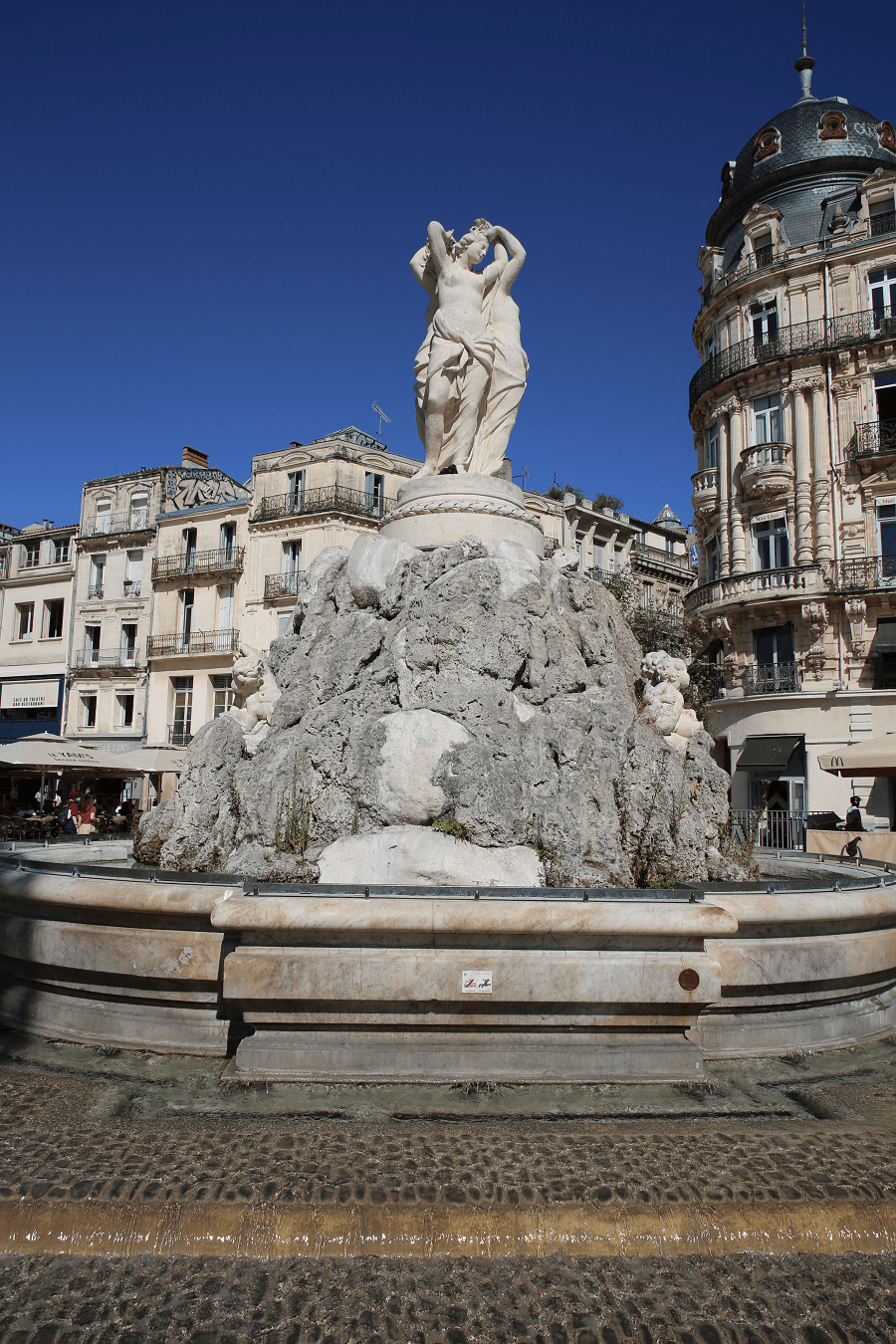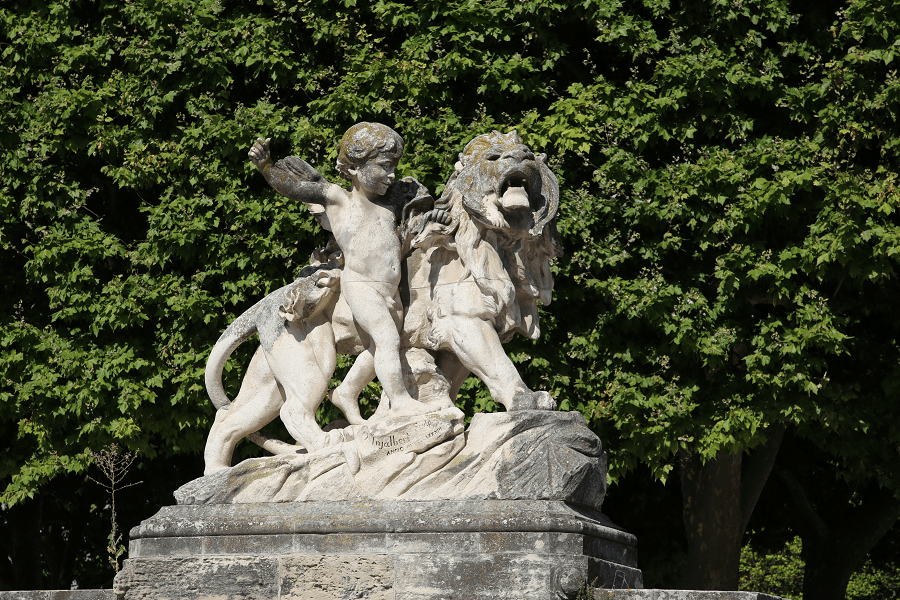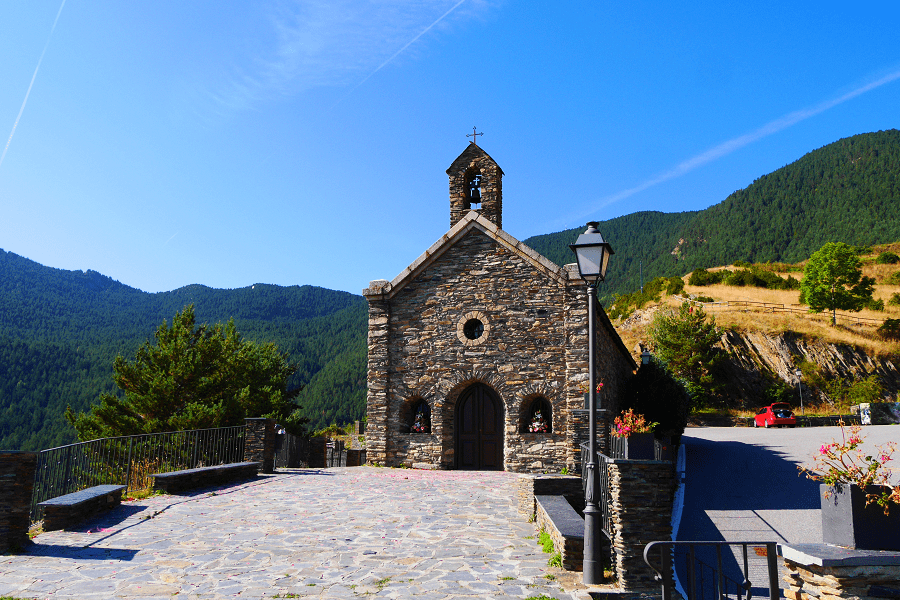Montpellier (fr. Montpellier, Occitan: Montpelhièr) is a city near the south coast of France on the Mediterranean Sea (former Languedoc region).
It is the capital of the Hérault department in the Occitania region. Montpellier is the third-largest French city on the Mediterranean coast after Marseille and Nice. It is the 7th-largest city of France.
Since the 1990s, Montpellier has experienced one of the strongest economic and demographic growth in the country. Its urban area has experienced the highest demographic growth in France since the year 2000. Its living environment, its cultural life and finally its Mediterranean climate explain this craze for “La Surdouée” (title of an advertising campaign in the 1990s, launched by Georges Frêche during his mandate as mayor).
With 70,000 students, it is also the city which has the highest number of students per capita in France after Poitiers (21% of the total population). The University of Montpellier is one of the oldest in the world, founded in 1160, and having been granted a charter in 1220 by Cardinal Conrad von Urach and confirmed by Pope Nicholas IV in a papal bull of 1289. It was suppressed during the French Revolution but was re-established in 1896.
In the Middle Ages Montpellier was one of the main cities of the Crown of Aragon—where King James I of Aragon was born—then of the kingdom of Majorca.
The city stands on the Camino de Arlés of the Camino de Santiago route to Santiago de Compostela.
Tourism, main attractions and interesting places
The historic centre of Montpellier is called the Écusson. This name is due to its form in medieval shield and heraldic symbol. This historic center remained the heart of the city since the beginning of the thirteenth century, and has not suffered heavy destruction (apart from that of the churches during the wars of religion) unlike the suburbs which were destroyed numerous times from the fourteenth to the seventeenth century. It is limited by a series of boulevards that follow the route of the old city walls, as is the case for most European cities. With almost 60 ha, the historic centre of Montpellier is one of the largest pedestrian areas in Europe.
The Tower of Babotte was for a long time an astronomical observatory. It provides access to the old town, near the former bourgeois districts. Originally, this tower was like the Tower of Pines and was not pierced with a door. In his shadow were important ovens.
The Tower of Pines, which successively served as a refuge for Catholics during the wars of religion, a prison for women in the nineteenth century, and a center for depositing municipal archives until 2000.
Comedy Square (place de la Comédie) is a must-see in Montpellier! This is an oval-shaped square, over which stands the building of the opera Comédie (in whose honour it received its name). This is one of the largest pedestrian areas in Europe.
A Fountain Three Graces created in 1773 by Etienne d’Antoine. Three Graces are the daughters of Zeus: Aglaya (“shining”), Euphrosynus (“well-meaning”) and Thalia (“blooming”). They personify the good, joyful, eternally youthful beginning of life. The fountain is in the centre of Place de la Comédie and is considered one of the symbols of Montpellier. The original sculpture is now in the Comédie Opera House.
Operas. Montpellier, as a national theatre stage, boasts two opera houses: Comédie Opera (1888) and Berlioz Opera (1990).
The Palace of Justice (fr. Palais de Justice) was built in 1853 in a neoclassical style on the site of the former Château des Guilhem castle.
Triumphal Arch (Porte du Peyrou). At the end of the seventeenth century, the quartermaster of the king decided to build the Arch, a copy of the Triumphal Arch in Paris, in honour of Louis XIV. The Arc de Triomphe was erected at the gates of the ancient fortress wall.
The Saint Clément Aqueduct (fr. L’aqueduc Saint-Clément). The engineer Henri Pitot de Lone during the construction of the Saint-Clément aqueduct in 1754 was inspired by the famous ancient Roman Pont du Gard. The Saint-Clement aqueduct supplies the city with drinking water from the sources of Saint-Clément town.
Château d’eau. Built at the same time as the Saint-Clément aqueduct in the eighteenth century, this tower serves as an urban reservoir of water.
Montpellier Cathedral (Cathédrale Saint-Pierre de Montpellier). Pope Urban V, a former student from Montpellier, built a monastery and church in the city in 1364, which later, in 1536, became the Cathedral of Saint-Pierre. This is a massive building in southern Gothic style, with a dominant portico, which is supported by two round columns. The church resembles a medieval fortress rather than a temple.
The Jacques-Coeur Hotel is the headquarters of the Languedoc Museum. It is a fifteenth century building with superb painted beams augmented by a monumental staircase in the seventeenth century. The museum also has many important historical objects.
Saint-Pierre cathedral, still standing despite all the attacks it suffered, dates to the fourteenth century. Its famous porch is unique. The remaining part of the monastery cloister which is still attached to it is sublime.
Antigone is a neighbourhood of Montpellier, France, east of the city centre. It is best known for its architectural design by Catalan architect Ricardo Bofill. The Antigone project, on a 36-hectare plot, has been one of the largest single developments completed in France and attracted worldwide interest.
The rue du Bras-de-Fer, dating to the fifteenth century.
The Hôtel de Varennes, which has many clearly identifiable medieval architectural elements;
The medieval mikveh (or Hebrew ritual bath) dates to the end of the twelfth century. With its synagogue and other adjoining premises, the ensemble is unique in Europe. The site is the subject of archaeological excavations.
The Saint-Clément aqueduct known as “Les Arceaux” upon his arrival in Montpellier, built by Henri Pitot (1695-1771), restorer of the Pont du Gard and inventor of the tube bearing his name.
The castles (folies) of the French city of Montpellier are a number of châteaux on the outskirts of the city. Comparable to English country houses rather than follies in the usual sense of the term, they were built by the wealthy as summer residences from the 18th century onwards.
Some churches and Catholic buildings in Montpellier:
- Notre-Dame des Tables basilica (Dom Bedos-Puget organ);
- the two Carmels of Montpellier (the Discalced Carmelites and the Carmelites of the Child Jesus);
- Saint-Roch church;
- Saint-Denis church;
- Sainte-Croix church;
- Sainte-Foy chapel , known as the White Penitents chapel.
Museums
- Musée Fabre, founded in 1828 by Baron Fabre (1766-1837) and on the initiative of the mayor, the Marquis de Dax d’Axat (1767-1847), first president of the Société des beaux-arts. It’s now one of the most important regional French museums, where a public collection of nearly 800 paintings, sculptures is presented.
- Atger Museum, more than 1,000 drawings from French, Italian and Flemish schools;
- Fougau museum (museum of art and popular tradition);
- Languedoc museum;
- Anatomy museum;
- Pharmacy museum;
- Emperor Antoninus museum (or mold museum);
- Montpellier History Museum (Notre-Dame des Tables crypt).
Planet Ocean Montpellier
Part of the Odysseum shopping centre, this aquarium recreates nine aquatic environments, from polar waters to tropical forests. Kids will love the interactive displays, such as a simulated cargo ship battling through stormy seas. There’s also a planetarium. Take tram 1 to the Odysseum station Place de France.
Gastronomy, cuisine and restaurants
The grisettes de Montpellier are candies in the shape of a pea. This specialty is made from two products from Languedoc: honey from Narbonne and liquorice, which was the specialty of the city of Montpellier from the eighteenth century.
The clapas is another specialty of the city of Montpellier. Created in December 2003, it is a pure cocoa chocolate, handcrafted. It combines crunchy and soft, with a composition of cream of turret, feuillantine and pieces of puffed rice, which exists in three colours: black, milk and white, recalling the Three Graces of the Place de la Comédie.
The Montpellier badge is a chocolate composed of a Grand Marnier ganache and olive oil mixed with an almond cream and sprinkled with chopped orange peel. Coated with white chocolate at the base, it also exists in a dark chocolate version. It was invented in 1985 by six chocolate makers in Montpellier. It was the former mayor, Georges Frêche, who encouraged them to commemorate the city’s anniversary date.
There are 19 Michelin list restaurants in the city:
- Leclère, 8 rue André-Michel, Modern Cuisine (1 star)
- Pastis Restaurant, 3 rue Terral, Modern Cuisine (1 star)
- Jardin des Sens, Place de la Canourgue, Modern Cuisine (1 star)
- Reflet d’Obione, 29 rue Jean-Jacques-Rousseau, Modern Cuisine, Mediterranean Cuisine (1 star)
- La Réserve Rimbaud, 820 avenue de Saint-Maur, Modern Cuisine (1 star)
- Céna, 2 place Pétrarque, France, Modern Cuisine
- Chez Delagare, 21 rue Jules-Ferry, Modern Cuisine, Creative
- L’Artichaut, 15 bis rue Saint-Firmin, Modern Cuisine
- Anga – Beaulieu, 10 rue Saint-Firmin, Modern Cuisine
- Le Bistro Urbain, 5 rue Alexandre-Cabanel, Modern Cuisine
- Abacus, 26 rue Terral, Modern Cuisine
- Ébullition, 10 rue du Pila-Saint-Gély, Modern Cuisine
- La Canourgue, Place de la Canourgue, Modern Cuisine
- Umami – La Cinquième Saveur, 15 rue Jean-Jacques-Rousseau, Korean
- Le Petit Jardin, 20 rue Jean-Jacques-Rousseau, Modern Cuisine
- L’Arbre, 10 parvis Oscar-Niemeyer, Traditional Cuisine
- Mahé, 581 avenue de la Pompignane, Modern Cuisine
- Terminal #1, 1408 avenue de la Mer, Modern Cuisine
- Soulenq, 469 rue de la Thériaque, Modern Cuisine
Shopping
The city centre (Ecusson) and Odysseum are ideal places to go shopping.
Transport and how to get to?
Montpellier–Méditerranée Airport or Aéroport de Montpellier–Méditerranée (IATA: MPL, ICAO: LFMT), also known as Fréjorgues Airport, is an airport in southern France. It is located 7 km (4 nautical miles) east-southeast of Montpellier in Mauguio, in the Hérault department of the Languedoc-Roussillon region in France. The airport carries the 10th largest number of passengers in France.
Montpellier is served by railway, including TGV highspeed trains. Montpellier’s main railway station is Saint-Roch.
The Montpellier tramway is a four-line tramway system in the city of Montpellier in Occitanie, France. The tramway is owned by the Montpellier Méditerranée Métropole, and is operated by the Transports de l’agglomération de Montpellier (TAM) authority. The Montpellier tramway is an optimal way to browse the city.
Shortest distance by car:
From the nearest French cities:
From Paris (tolls): 7 hr 19 min (750 km) via A71 and A75
From Menton (tolls): 3 h 39 min (358 km) via A8
From Beaulieu-sur-Mer (tolls): 3 h 39 min (344 km) via A8
From Villefranche-sur-Mer (tolls): 3 h 41 min (345 km) via A8
From Nice (tolls): 3 h 25 min (334 km) via A8
From Cagnes-sur-Mer (tolls): 3 h 9 min (315 km) via A8
From Antibes (tolls): 3 h 17 min (312 km) via A8
From Cannes (tolls): 3 h 12 min (300 km) via A8
From Mandelieu-La Napoule (tolls): 2 h 51 min (291 km) via A8
From Fréjus (tolls): 2 h 48 min (269 km) via A8
From Saint-Raphaël (tolls): 2 h 55 min (272 km) via A8
From Sainte-Maxime (tolls): 2 h 52 min (273 km) via A8
From Saint-Tropez (tolls): 3 h 11 min (273 km) via A8
From Cavalaire-sur-Mer (tolls): 3 h 15 min (278 km) via A8
From Toulon (tolls): 2 h 31 min (234 km) via A54
From Aix-en-Provence (tolls): 1 h 55 min (158 km) via A54
From Nîmes (tolls): 1 h 5 min (56.4 km) via A9 and A709
From Marseille (tolls): 2 h (170 km) via A54
From Avignon (tolls): 1 h 19 min (96.8 km) via A9
From Sète: 47 min (31.3 km) via D612
From Agde (tolls): 59 min (60.8 km) via A9
From Pézenas: 52 min (61.7 km) via A75 and A750
From Béziers (tolls): 1 h 8 min (72.5 km) via A9
From Perpignan (tolls): 1 h 55 min (165 km) via A9
From Argelès-sur-Mer (tolls): 2 h 7 min (183 km) via A9
From Collioure (tolls): 2 h 11 min (190 km) via A9
From Narbonne (tolls): 1 h 16 min (95.8 km) via A9
From La Baule-Escoublac (tolls): 8 h 30 min (903 km) via A62
From Saint-Nazaire (tolls): 8 h 27 min (889 km) via A62
From Nantes (tolls): 7 h 38 min (825 km) via A62
From Saumur (tolls): 6 h 41 min (722 km) via A71 and A75
From Les Sables-d’Olonne (tolls): 7 h 29 min (813 km) via A62
From Cognac (tolls): 5 h 48 min (600 km) via A62
From Angoulême (tolls): 5 h 44 min (598 km) via A62
From Eauze (tolls): 4 h 6 min (372 km) via A61
From La Rochelle (tolls): 6 h 17 min (663 km) via A62
From Rochefort (tolls): 5 h 53 min (634 km) via A62
From Saintes (tolls): 5 h 34 min (598 km) via A62
From Arcachon (tolls): 5 h 16 min (536 km) via A62 and A61
From Royan (tolls): 6 h (601 km) via A62
From Biarritz (tolls): 5 h 5 min (544 km) via A64 and A61
From Saint-Jean-de-Luz (tolls): 5 h 8 min (550 km) via A64
From Bayonne (tolls): 4 h 55 min (532 km) via A64 and A61
From Dax (tolls): 4 h 55 min (511 km) via A64 and A61
From Lourdes (tolls): 4 h (410 km) via A64 and A61
From Pau (tolls): 4 h 12 min (427 km) via A64 and A61
From Périgueux (tolls): 4 h 50 min (406 km) via A75
From Bordeaux (tolls): 4 h 42 min (484 km) via A62 and A61
From Toulouse (tolls): 2 h 35 min (242 km) via A61 and A9
From Carcassonne (tolls): 1 h 46 min (151 km) via A61 and A9
From the different European cities:
From Monaco (tolls): 3 h 33 min (349 km) via A8
From Andorra (tolls): 4 h 13 min (332 km) via A9
From Barcelona (tolls): 4 hr 14 min (355 km) via AP-7 and A9
From Madrid (tolls): 10 hr 1 min (947 km) via A-2
From Moscow (tolls): 35 hr (3,275 km) via E30/M1
From Belgrade (tolls): 17 hr 40 min (1,653 km) via E70
From Istanbul (tolls): 28 hr (2,602 km) via E70
From Bern (tolls): 6 hr 2 min (608 km) via A1
Main information
Area: 56.9 sq. km
Population: 281,700
Languages: French, Occitan
Currency: euro
Visa: Schengen
Time: Central European UTC +1
Coordinates: 43°36′43″N 3°52′38″E
See here Pyrenees travel guide
See here France travel guide
See here Spain travel guide




